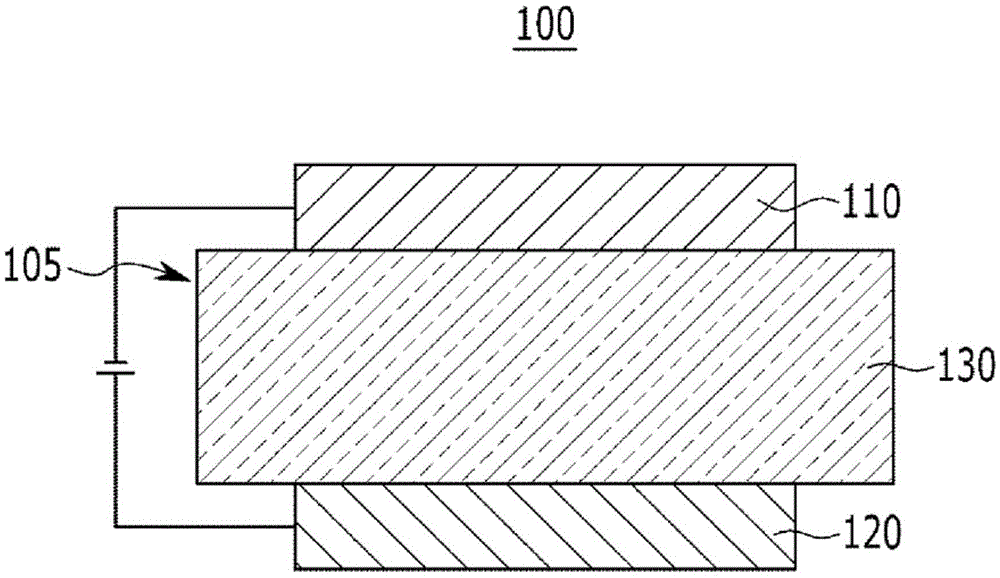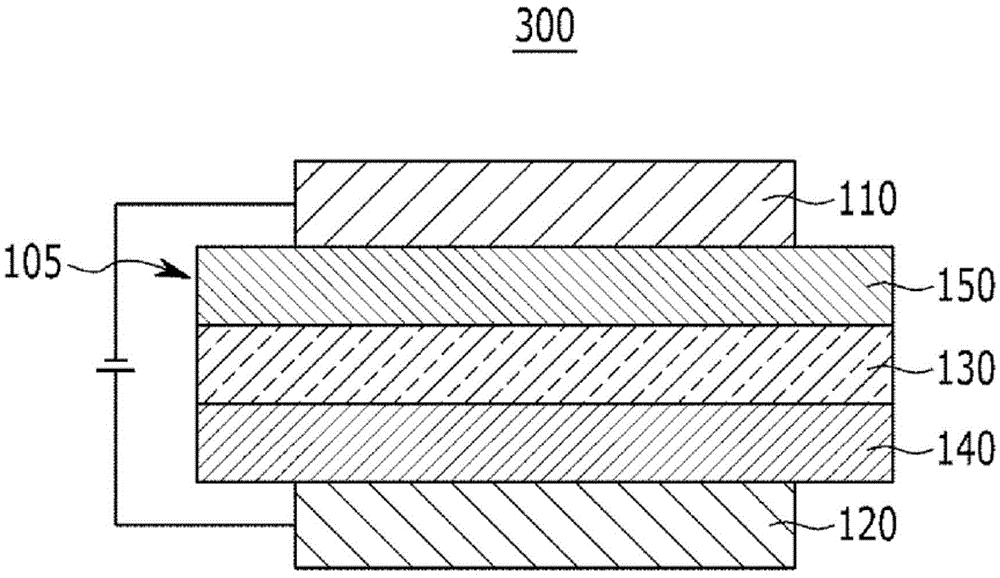Compound for organic optoelectronic device, organic light emitting diode comprising the same, and display device comprising the same
A technology of organic optoelectronic devices and optoelectronic devices, applied in organic chemistry, electroluminescent light sources, luminescent materials, etc., can solve problems such as low-efficiency combination, slow electron migration, etc., and achieve high film stability, excellent hole or electron transport properties, excellent electrochemical and thermal stability effects
- Summary
- Abstract
- Description
- Claims
- Application Information
AI Technical Summary
Problems solved by technology
Method used
Image
Examples
Embodiment 1
[0128] Example 1: Compound A-1
[0129]
[0130] 9.6 g of intermediate compound T-1 and 8.7 g of intermediate compound C-1 were dissolved in 100 ml of tetrahydrofuran in a 250 ml round-bottomed flask equipped with a thermometer, a reflux condenser and a stirrer under a nitrogen atmosphere, to which 80 ml was added 2M-potassium carbonate aqueous solution.
[0131] Next, 1.2 g of tetrakistriphenylphosphine palladium was added to the above mixture, and the resulting mixture was refluxed for 12 hours. When the reaction was complete, the reaction was extracted several times with dichloromethane. The extract was treated with anhydrous magnesium sulfate to remove moisture. Then, the obtained product was filtered and the solvent was removed.
[0132] Then, the product was recrystallized for purification to obtain 10.0 g of Compound A-1.
Embodiment 2
[0133] Example 2: Compound A-3
[0134]
[0135] 7.4 g of intermediate compound T-2 and 9.7 g of intermediate compound C-2 were dissolved in 100 ml of tetrahydrofuran in a 250 ml round bottom flask with a thermometer, reflux condenser and stirrer under nitrogen atmosphere, to which was added 0.3 g of sodium tert-butoxide, 0.9 g of dibenzylideneamine palladium and 0.4 g of t-butylphosphorus. The mixture was refluxed for 12 hours. When the reaction was complete, the reactant was extracted several times with dichloromethane and treated with anhydrous magnesium sulfate to remove moisture. The resulting product was filtered and the solvent was removed.
[0136] Then, the product was recrystallized for purification to obtain 10.7 g of compound A-3. The synthesized compound A-3 was identified by LC-Mass to have [M+H] of 715.31 + molecular weight.
Embodiment 3
[0137] Example 3: Compound A-7
[0138]
[0139] 9.6 g of intermediate compound T-1 and 8.7 g of intermediate compound C-3 were dissolved in 100 ml of tetrahydrofuran in a 250 ml round-bottomed flask equipped with a thermometer, reflux condenser, and stirrer under nitrogen atmosphere, and 80 ml of tetrahydrofuran was added thereto. 2M-potassium carbonate aqueous solution. Next, 1.2 g of tetrakistriphenylphosphine palladium was added to the above mixture. The resulting mixture was refluxed for 12 hours. When the reaction was completed, the reactant was extracted with dichloromethane several times, treated with anhydrous magnesium sulfate to remove moisture, and then filtered. Then, the solvent is removed from the filtered product.
[0140] Then, the product was recrystallized for purification to obtain 10.7 g of compound A-7. The synthesized compound A-7 was identified by LC-Mass to have [M+H] of 717.42 + molecular weight.
PUM
| Property | Measurement | Unit |
|---|---|---|
| emission peak | aaaaa | aaaaa |
Abstract
Description
Claims
Application Information
 Login to View More
Login to View More - R&D
- Intellectual Property
- Life Sciences
- Materials
- Tech Scout
- Unparalleled Data Quality
- Higher Quality Content
- 60% Fewer Hallucinations
Browse by: Latest US Patents, China's latest patents, Technical Efficacy Thesaurus, Application Domain, Technology Topic, Popular Technical Reports.
© 2025 PatSnap. All rights reserved.Legal|Privacy policy|Modern Slavery Act Transparency Statement|Sitemap|About US| Contact US: help@patsnap.com



